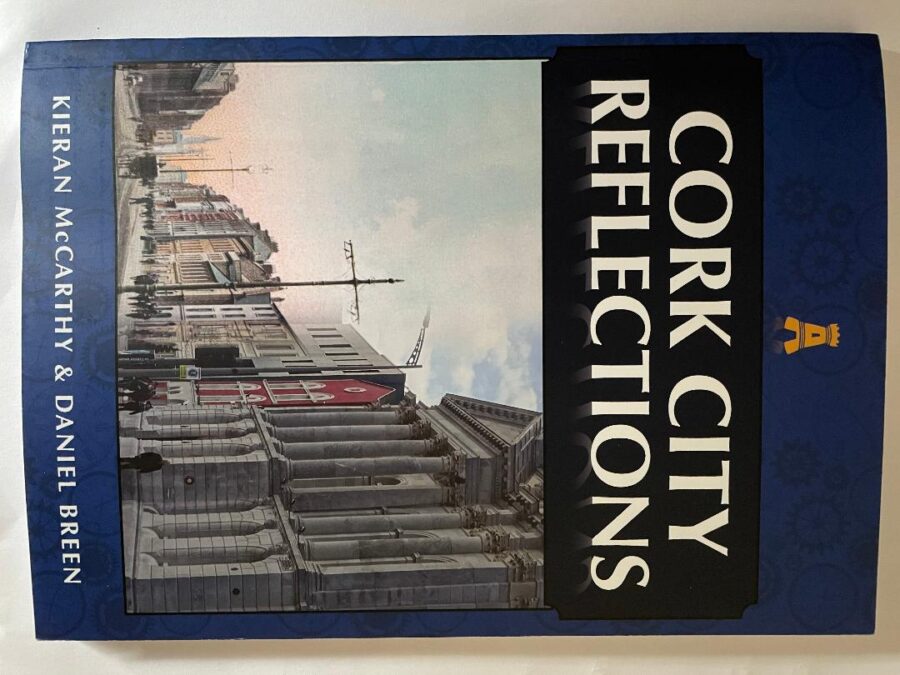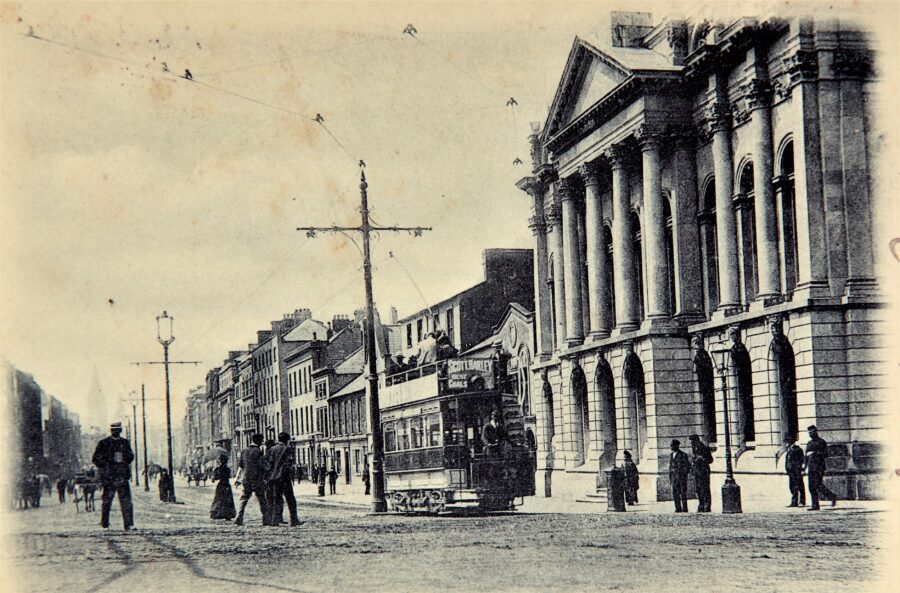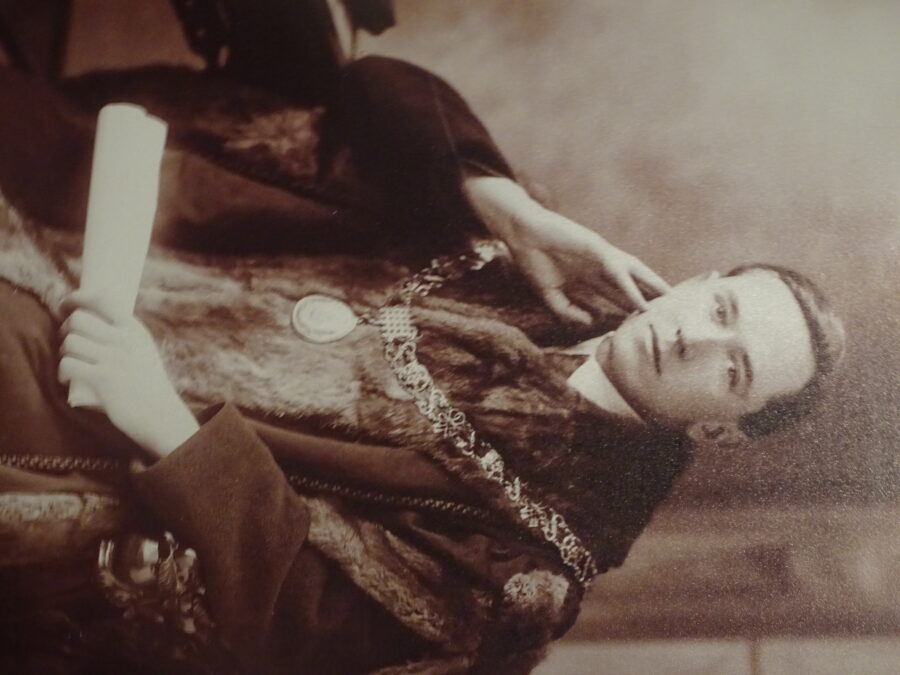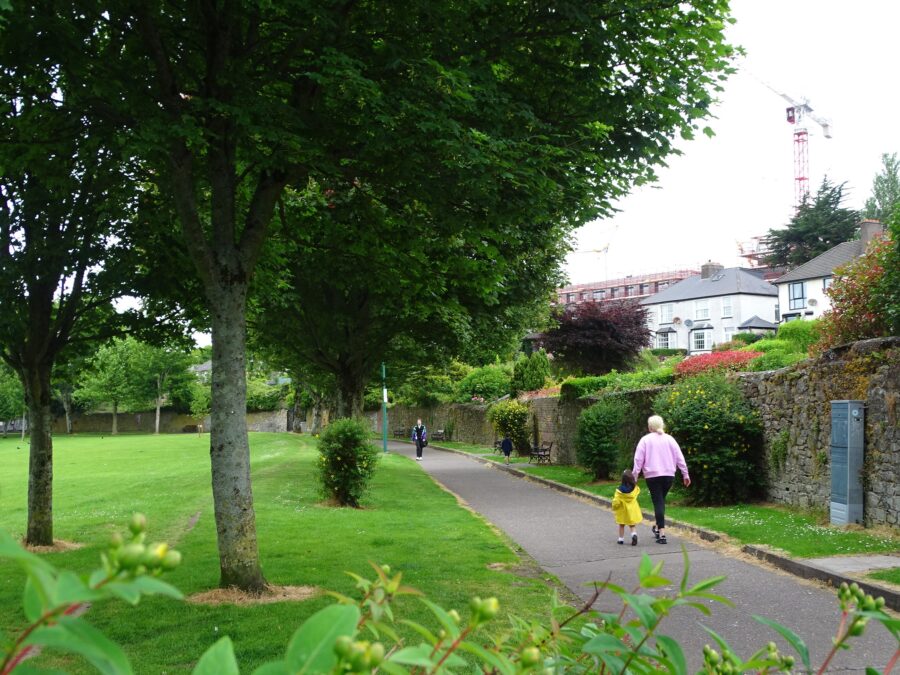
Kieran’s Our City, Our Town Article,
Cork Independent, 5 August 2021
New Book: Cork City Reflections
In our new book Cork City Reflections, Dan Breen and I build on our previous Cork City Through Time (2012) publication as we continue to explore Cork Public Museum’s extensive collection of postcards. People have been sending, receiving and collecting postcards for well over 150 years. They have always come in a variety of forms including plain, comedic, memorial, and of course topographical. Their popularity reached its zenith in the two decades before the outbreak of World War I when people used postcards for a variety of everyday reasons from ordering shopping to making appointments. Postcards have been described as the ‘social media’ of the Edwardian period as it is estimated that about one billion penny postcards were sold annually in the United States alone between 1907 and 1915.
Since 1992, Cork Public Museum has actively sourced and collected postcards of Cork interest. The majority of postcards are topographical in nature and cover towns and villages throughout County Cork. Presently, the collection numbers in the thousands but Dan, the museum’s curator, is constantly on the lookout for rarer and more unique examples or gems. In an age where digital photography and the internet have made capturing and sharing images so effortless, it is easy to forget that in the decades before the camera became popular and affordable; postcards were the only photographic souvenirs of the landscape available to ordinary people.
The old postcards with Cork City Reflections show the city of Cork to be a place of scenic contrasts. They are of times and places, that Corkonians are familiar with. The city as a visually bright world with all its shapes and contours challenge the photographer to take the best photograph, to capture the best of the city. There is a power in these images – they all have multiple interpretations; they are a window into the place, neighbourhood, people, their lives and identity. Many of the postcards show or frame the River Lee and the tidal estuary and the intersection of the city and the water. The postcards show how rich the city is in its traces of its history. The various postcard also reflect upon how the city has developed in a piecemeal sense, with each century bringing another addition to the city’s landscape.
For the photographer it took time patience to set up the picture. One had to wait for the people; the weather to be right, the order and symmetry had to be right. The gathering of memory, life, energy, the city’s beat, its light and shape had to be considered. The same challenges were present when trying to retake old photographs in the present day.
In more depth, the postcards show people’s relationship to their world – continuity and familiarity crossing past and present. They record a person, an event, a social phenomenon, and attempt to reconstruct a sense of place. The postcards let moments linger, reflect on life and showcase the the city as a work of art. The tinting or colouring in of postcards adds in more subtlety and weight to the image and to the concept of the city as a work of art. The tinting adds more to the romanticisation of the landscape.
Some public spaces are well represented, emphasised and are created and arranged in a sequence to convey particular meanings. Buildings such as a City Hall, a court house or a theatre symbolise the theatrics of power. Indeed, one hundred years ago in Ireland was a time of change, the continuous rise of an Irish cultural revival, debates over Home Rule and the idea of Irish identity were continuously negotiated by all classes of society. Just like the tinting of the postcards, what the viewer sees is a world which is being contested, refined and reworked. Behind the images presented is a story of change – complex and multi-faceted.
The postcards freeze the action, conceptualise society and civil expressions – from the city’s links with the natural world such as rivers and tide to its transportation networks, commerce and social networks. Places of Cork pride, popular culture and heritage, are depicted and are validated communicating the ideas of those places. Indeed, some of the postcards have written personal comments on the back. All types of emotion are represented from happiness in visiting Cork to comments on how the addressee was missed.
We have grouped the postcards under thematic headings like main streets, public buildings, transport, and industry. The highlight of Edwardian Cork was the hosting of an International Exhibition in 1902 and 1903 and through the souvenir postcards we can get a glimpse of this momentous event. We hope that any reader of this book will not only appreciate how Cork City has evolved and grown over the last century but also how invaluable postcards can be in understanding the nuances and complexities of studying images and their history.
The old postcards within the book are archived in the Cork Public Museum and have been photographed by the museum’s digital officer Dara McGrath. The present day pictures were taken by the authors. We would like to also thank the staff of Amberley Publishing for their vision with this work and for creating a now and then frame right throughout the book.
Cork City Reflections by Kieran McCarthy and Daniel Breen is published by Amberley Publishing and is available in any good bookshop.
Caption:
1111a. Front cover of Cork City Reflections (2021, Amberley Publishing) by Kieran McCarthy and Daniel Breen.
1111b. South Mall, c.1900 from Cork City Reflections.




